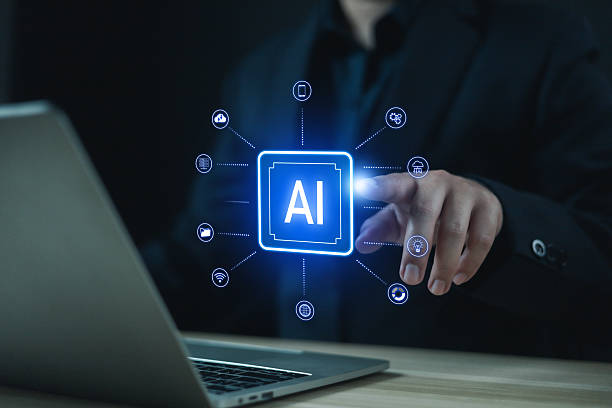What is Artificial Intelligence? Definition, History and Basic Concepts
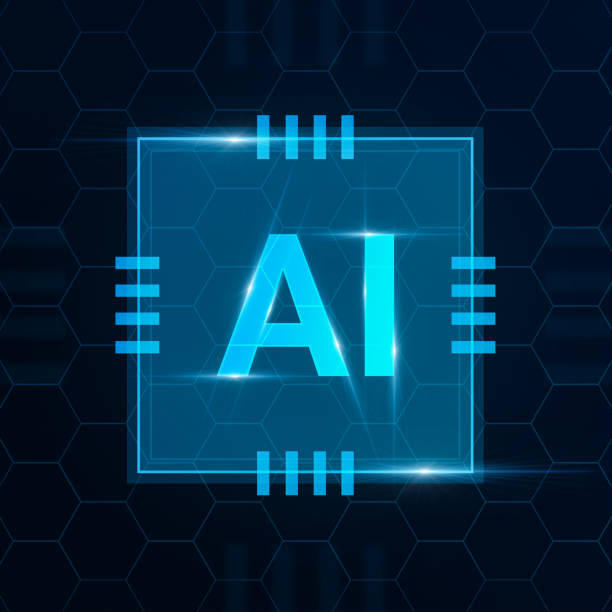
#Artificial_Intelligence (Artificial Intelligence or AI) is a branch of computer science that deals with building machines capable of performing tasks that typically require human intelligence.
These tasks include learning, reasoning, problem-solving, natural language understanding, and pattern recognition.
The history of artificial intelligence dates back to the 1950s, when researchers began exploring the possibility of building intelligent machines.
Basic concepts in artificial intelligence include algorithms, data, neural networks, and machine learning.
Artificial Intelligence tries to create systems that can automatically perform various tasks using these concepts.
One of the most important goals of #Artificial_Intelligence is to create systems that are capable of learning from data.
This learning can be supervised learning, unsupervised learning, or reinforcement learning.
In supervised learning, the system is trained using labeled data.
In unsupervised learning, the system looks for patterns and structures in unlabeled data.
And in reinforcement learning, the system learns how to act in the best way by trial and error and receiving rewards.
The development of #Artificial_Intelligence requires a deep understanding of various sciences including mathematics, statistics, computer science, and cognitive science.
#Artificial_Intelligence researchers are trying to create systems by combining these sciences that can effectively solve complex problems and make intelligent decisions.
Artificial intelligence is currently used in various fields such as medicine, automotive, finance, and education, and is expected to play a much more important role in our lives in the future.
Does your current company website not reflect your brand’s credibility and power as it should? Rasaweb solves this challenge for you with professional company website design.
✅ Increase the credibility and trust of visitors
✅ Attract more targeted customers
⚡ Click to get a free consultation!
Types of Artificial Intelligence Approaches and Classifications

#Artificial_Intelligence can be divided into different categories based on capabilities and applications.
One of the most common classifications is dividing #Artificial_Intelligence into Narrow AI and General AI.
Weak artificial intelligence refers to systems that are designed to perform a specific task and cannot perform other tasks.
Examples of weak artificial intelligence include facial recognition systems, recommendation systems, and chat bots.
In contrast, strong artificial intelligence refers to systems that are capable of performing any task that a human can perform.
Strong artificial intelligence is still in the research and development stage and has not yet been fully realized.
Based on the approaches used, #Artificial_Intelligence can be divided into other categories as well.
One of these categories is rule-based systems, which use a set of rules to make decisions.
Another category is machine learning systems, which use data to learn patterns and build models.
And the third category is neural network systems, which use a structure similar to the human brain to process information.
Each of these approaches has its own advantages and disadvantages, and depending on the type of problem and the available data, one of these approaches may be more suitable.
For example, rule-based systems are suitable for problems that have specific and clear rules, while machine learning systems are more suitable for problems where a lot of data is available and there are no exact rules.
Choosing the right approach for developing #Artificial_Intelligence requires sufficient knowledge and experience in this field.
Given recent advances in #deep_learning and natural language processing, we are seeing the development of smarter systems that are capable of understanding and responding to complex questions and can effectively assist humans in various fields.
These advances show that #Artificial_Intelligence is becoming a powerful and influential technology that can dramatically change our lives.
Applications of Artificial Intelligence in Various Industries

#Artificial_Intelligence is currently used in various industries and plays an important role in improving efficiency and increasing productivity.
In the medical industry, #Artificial_Intelligence is used to diagnose diseases, develop drugs, and provide personalized medical care.
For example, #Artificial_Intelligence systems can analyze medical images and diagnose diseases such as cancer in the early stages.
In the automotive industry, #Artificial_Intelligence is used to develop self-driving cars, improve safety systems, and provide entertainment and information services to drivers.
Self-driving cars use sensors and #Artificial_Intelligence algorithms to understand their surroundings and drive without human intervention.
In the financial industry, #Artificial_Intelligence is used to detect fraud, manage risk, and provide personalized financial services.
#Artificial_Intelligence systems can analyze financial transactions and identify suspicious transactions.
In addition to these industries, #Artificial_Intelligence has extensive applications in other fields such as education, agriculture, and manufacturing.
In education, #Artificial_Intelligence can be used to provide personalized training, evaluate student performance, and automate administrative tasks.
In agriculture, #Artificial_Intelligence can be used to optimize water and fertilizer consumption, diagnose plant diseases, and increase productivity.
And in manufacturing, #Artificial_Intelligence can be used to control quality, optimize production processes, and reduce costs.
The use of #Artificial_Intelligence in various industries not only leads to improved efficiency and increased productivity, but can also help create new job opportunities and develop innovative technologies.
| Industry | Key Applications of Artificial Intelligence |
|---|---|
| Medicine | Disease diagnosis, drug development, personalized medical care |
| Automotive | Self-driving cars, advanced safety systems, entertainment and information services |
| Finance | Fraud detection, risk management, personalized financial services |
| Education | Personalized training, student performance evaluation, administrative task automation |
| Agriculture | Optimizing water and fertilizer consumption, diagnosing plant diseases, increasing productivity |
| Manufacturing | Quality control, optimizing production processes, reducing costs |
Machine Learning and its Role in Artificial Intelligence

Machine Learning (ML) is a subset of #Artificial_Intelligence that allows machines to learn from data without explicit programming.
In fact, machine learning gives machines the ability to identify patterns and relationships in data by examining data and use these patterns for prediction or decision making.
Machine learning plays a very important role in the development of #Artificial_Intelligence, because many #Artificial_Intelligence systems rely on machine learning to perform their tasks.
There are different types of machine learning algorithms, each of which is suitable for a specific type of problem.
Supervised learning algorithms are trained using labeled data.
These algorithms use input and output data to learn a mapping function that can be used to predict new outputs.
Unsupervised learning algorithms are trained using unlabeled data.
These algorithms look for patterns and structures in the data and can be used for data clustering, dimensionality reduction, and anomaly detection.
And reinforcement learning algorithms learn how to act in the best way by trial and error and receiving rewards.
Choosing the right algorithm for machine learning depends on the type of problem, the available data, and the desired goals.
For example, if the goal is to predict a continuous value, regression algorithms may be appropriate.
If the goal is to classify data into different categories, classification algorithms may be appropriate.
And if the goal is to find patterns and structures in the data, clustering algorithms may be appropriate.
Machine learning is widely used in various fields such as #image_recognition, natural language processing, and data analysis.
Given recent advances in this field, machine learning is expected to play a much more important role in the development of #Artificial_Intelligence and solving complex problems.
How much does losing business leads due to an unprofessional website cost you? Solve this problem forever with professional company website design by Rasaweb!
✅ Increase the credibility and trust of potential customers
✅ Easier attraction of new business leads
⚡ Get free consultation now!
Neural Networks and Deep Learning

Neural Networks (NN) are computational models inspired by the structure of the human brain.
A neural network consists of a large number of processing units called neurons that are connected to each other in a layered manner.
Each neuron receives an input signal, processes it, and produces an output signal.
The output signal of a neuron can be used as an input for other neurons in later layers.
Deep Learning (DL) is a subset of machine learning that uses deep neural networks (networks with multiple layers) to learn from data.
Deep neural networks are capable of learning more complex patterns and features than traditional neural networks.
Deep learning has dramatically improved the performance of #Artificial_Intelligence systems in various fields such as image recognition, natural language processing, and speech recognition.
One of the most important advantages of deep learning is that it can automatically extract important features from data.
In traditional machine learning methods, engineers must manually extract important features from data.
This process can be time-consuming and difficult.
But in deep learning, neural networks can automatically extract important features from data.
This makes deep learning very suitable for problems where complex and large amounts of data are available.
Deep learning is currently used in various fields such as #self-driving_cars, #face_recognition, #machine_translation, and #content_generation.
Given recent advances in this field, deep learning is expected to play a much more important role in the development of #Artificial_Intelligence and solving complex problems.
Natural Language Processing

Natural Language Processing (NLP) is a branch of #Artificial_Intelligence that allows machines to understand, interpret, and generate human language.
The main goal of NLP is to create systems that can communicate with humans in natural language and perform tasks such as machine translation, text summarization, and question answering.
Natural language processing includes a set of techniques and algorithms that are used to analyze and process human language.
These techniques include syntactic analysis, semantic analysis, and discourse analysis.
Syntactic analysis examines the structure of sentences and determines the relationships between words.
Semantic analysis examines the meaning of words and sentences and tries to understand the overall meaning of the text.
And discourse analysis examines the relationships between sentences and paragraphs and tries to understand the flow of information in the text.
Natural language processing is used in various fields.
In machine translation, NLP is used to translate texts from one language to another.
In text summarization, NLP is used to generate short summaries of long texts.
In question answering, NLP is used to answer questions posed in natural language.
And in chat bots, NLP is used to communicate with users in natural language.
Given recent advances in #deep_learning, the performance of NLP systems has improved dramatically.
Deep neural networks are capable of learning more complex patterns and features in human language and can perform NLP tasks with higher accuracy.
NLP is expected to play a much more important role in the development of #Artificial_Intelligence and human-machine communication.
Challenges and Limitations of Artificial Intelligence
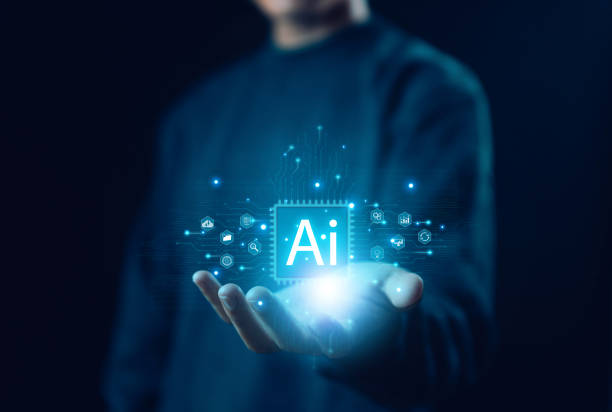
#Artificial_Intelligence, despite its remarkable advances, still faces many challenges and limitations.
One of the most important challenges is the need for large amounts of high-quality data to train #Artificial_Intelligence systems.
Many machine learning algorithms require a lot of data to learn effectively.
If the training data is not sufficient or of high quality, #Artificial_Intelligence systems may not be able to perform well.
Another challenge is the problem of interpretability of #Artificial_Intelligence systems.
Many complex algorithms, such as deep neural networks, operate as black boxes and it is not easy to understand how they have reached a particular result.
This can create problems in areas such as medicine and law, where there is a need to explain and justify decisions.
Another limitation of #Artificial_Intelligence is the problem of bias in data and algorithms.
If the training data is biased, #Artificial_Intelligence systems will also learn the bias and may make unfair decisions.
For example, if a facial recognition system is trained using data that mostly includes images of white people, it may not be able to recognize the faces of people of color correctly.
In addition to these challenges, ethical and social issues are also raised in relation to #Artificial_Intelligence.
For example, there are concerns about job losses due to automation, the use of #Artificial_Intelligence in automatic weapons, and the protection of people’s privacy.
To address these challenges, there is a need to develop appropriate legal and ethical frameworks.
| Challenge | Description |
|---|---|
| Need for large amounts of high-quality data | Machine learning algorithms require a lot of data to learn effectively. |
| Interpretability | Many complex algorithms operate as black boxes and it is not possible to understand how they have reached a particular result. |
| Bias | If the training data is biased, #Artificial_Intelligence systems will also learn the bias and may make unfair decisions. |
| Ethical and social issues | There are concerns about job losses, the use of #Artificial_Intelligence in automatic weapons, and the protection of people’s privacy. |
The Future of Artificial Intelligence Predictions and Emerging Trends
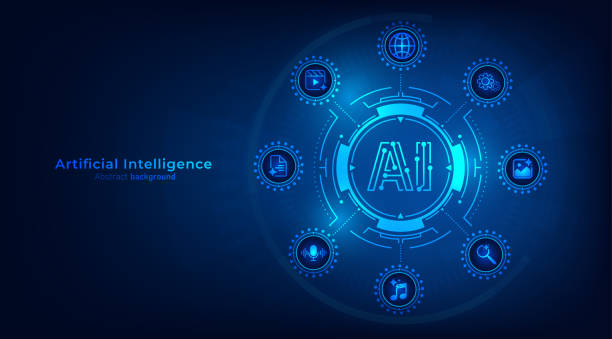
The future of #Artificial_Intelligence looks very bright and we expect to see remarkable advances in this field in the coming years.
One of the emerging trends is the development of Explainable AI (XAI).
The goal of XAI is to create #Artificial_Intelligence systems that can explain their decisions in a clear and understandable way to humans.
This can increase trust in #Artificial_Intelligence systems and facilitate their use in sensitive areas.
Another trend is the development of Ethical AI.
The goal of Ethical AI is to create #Artificial_Intelligence systems that are designed in accordance with ethical principles and human values.
This can prevent bias and discrimination in #Artificial_Intelligence decisions and ensure that #Artificial_Intelligence benefits society.
Also, we expect to see the development of Artificial General Intelligence (AGI) in the future.
AGI refers to #Artificial_Intelligence systems that are capable of performing any task that a human can perform.
The development of AGI is a major challenge, but it can revolutionize our lives.
In addition to these trends, #Artificial_Intelligence is expected to find wider applications in various fields such as medicine, automotive, finance, and education.
With the advancement of technology, #Artificial_Intelligence will increasingly integrate into our lives and play a more important role in our decision-making and task performance.
Are you disappointed with the low conversion rate of your online store?
Rasaweb is your definitive solution with professional e-commerce website design!
✅ Increase your sales and revenue
✅ Unparalleled user experience for your customers
⚡ Get a free consultation now!
The Impact of Artificial Intelligence on the Labor Market
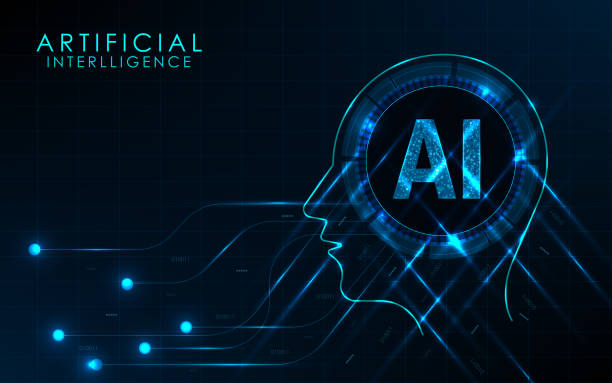
The impact of #Artificial_Intelligence on the labor market is a complex and controversial issue.
On the one hand, there are concerns about job losses due to automation.
#Artificial_Intelligence systems can automatically perform many repetitive and routine tasks, which can lead to a reduction in the need for human labor in some industries.
On the other hand, #Artificial_Intelligence can also create new job opportunities.
The development, implementation, and maintenance of #Artificial_Intelligence systems require new specialists who are specialized in fields such as computer science, statistics, and machine learning.
In addition, #Artificial_Intelligence can help improve productivity and efficiency in various industries, which can lead to economic growth and the creation of new job opportunities.
In order to benefit from the advantages of #Artificial_Intelligence in the labor market and prevent its negative effects, we need to invest in education and the development of new skills.
People must learn skills that cannot be replaced by automation, such as critical thinking, problem solving, and creativity.
Also, governments and organizations must adopt policies that protect workers from the negative effects of automation and help them learn new skills and find new jobs.
In general, the impact of #Artificial_Intelligence on the labor market depends on how this technology is managed and used.
If #Artificial_Intelligence is used properly, it can help improve working conditions, increase productivity, and create new job opportunities.
But if it is not managed properly, it can lead to job losses and increased inequality.
How to Learn Artificial Intelligence? Learning Resources and Paths

Learning #Artificial_Intelligence can be a valuable investment in the future.
Fortunately, there are many resources and learning paths to get started in this field.
One of the best ways to learn #Artificial_Intelligence is to participate in online courses.
Platforms such as Coursera, edX, and Udacity offer a variety of courses in the field of #Artificial_Intelligence, machine learning, and deep learning.
Another way is to study books and scientific articles.
There are many books in the field of #Artificial_Intelligence that can help you understand basic and advanced concepts.
Also, you can study scientific articles in reputable journals and conferences to be informed of the latest advances in this field.
In addition, you can strengthen your skills in #Artificial_Intelligence by participating in practical projects.
You can choose small projects and try to solve them using machine learning algorithms.
Also, you can participate in open source projects and increase your experience by collaborating with other developers.
To start learning #Artificial_Intelligence, you need to have basic knowledge in mathematics, statistics, and computer science.
If you do not have this knowledge, you can first take courses in these fields and then start learning #Artificial_Intelligence.
Also, proficiency in a programming language such as Python is essential for implementing #Artificial_Intelligence algorithms.
Python is a popular programming language in the field of #Artificial_Intelligence and has many libraries for machine learning and deep learning.
FAQ
| Question | Answer |
|---|---|
| What is artificial intelligence? | It is a simulation of human intelligence in machines programmed to think like humans and mimic their actions. |
| What are the main branches of artificial intelligence? | Includes machine learning, deep learning, natural language processing, computer vision, and robotics. |
| What is Machine Learning? | It is a branch of artificial intelligence that focuses on enabling systems to learn from data and identify patterns without explicit programming. |
| Mention examples of artificial intelligence applications in our daily lives. | Voice assistants (such as Siri and Alexa), recommendation systems in Netflix and Amazon, self-driving cars, and facial recognition programs. |
| What is Deep Learning? | It is a subset of machine learning that uses multi-layered (deep) artificial neural networks to process large amounts of data. |
| What is Natural Language Processing (NLP)? | It is a branch of artificial intelligence that focuses on enabling computers to understand, interpret, and generate human language. |
| What are some of the ethical concerns related to artificial intelligence? | Includes bias in data, privacy, job loss, and liability in case of errors. |
| What are the main benefits of artificial intelligence? | Increased efficiency, improved decision making, automation of repetitive tasks, and discovery of complex patterns in data. |
| How is artificial intelligence used in the field of healthcare? | In disease diagnosis, drug discovery, medical image analysis, and personalized patient care. |
| How do you see the future of artificial intelligence? | It is expected to continue to evolve at a rapid pace, affecting all aspects of human life, from industry to education and entertainment. |
And other advertising services of Rasa Web Advertising Agency in the field of advertising
Intelligent conversion rate optimization: A new service to increase website traffic by optimizing key pages.
Intelligent Marketplace: Transform your SEO ranking with the help of Google Ads management.
Intelligent content strategy: Transform user engagement with the help of precise audience targeting.
Intelligent Reportage: An effective tool for digital branding with the help of optimizing key pages.
Intelligent Marketplace: Designed for businesses looking to engage users through precise audience targeting.
And more than hundreds of other services in the field of internet advertising, advertising consulting and organizational solutions
Internet Advertising | Advertising Strategy | Reportage Ad
Sources
What is the application of artificial intelligence and how does it work?
,Artificial Intelligence – Wikipedia
,What is Artificial Intelligence (AI)?
,What is Artificial Intelligence? | Application and types of artificial intelligence
? For the rise of your business in the digital space, Rasaweb Afarin Digital Marketing Agency is with you. By using the latest online marketing methods, from SEO and content production to website design with a modern user interface, we offer comprehensive and result-oriented solutions to be seen more and attract loyal customers. Let our expertise pave the way for your digital success and comprehensively fulfill your goals.
📍 Tehran, Mirdamad Street, next to the Central Bank, South Kazerun Alley, Ramin Alley, No. 6
“`

